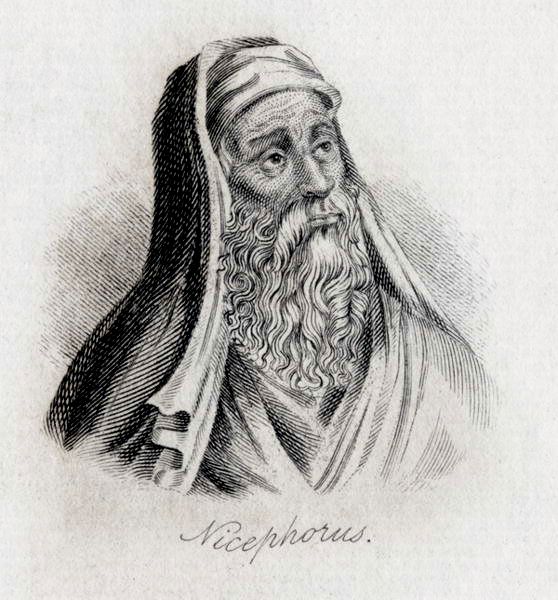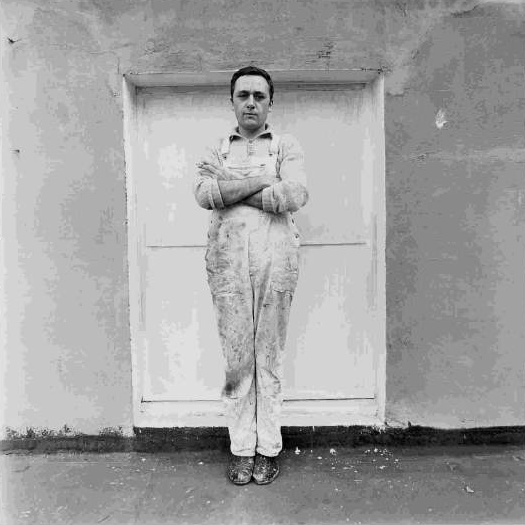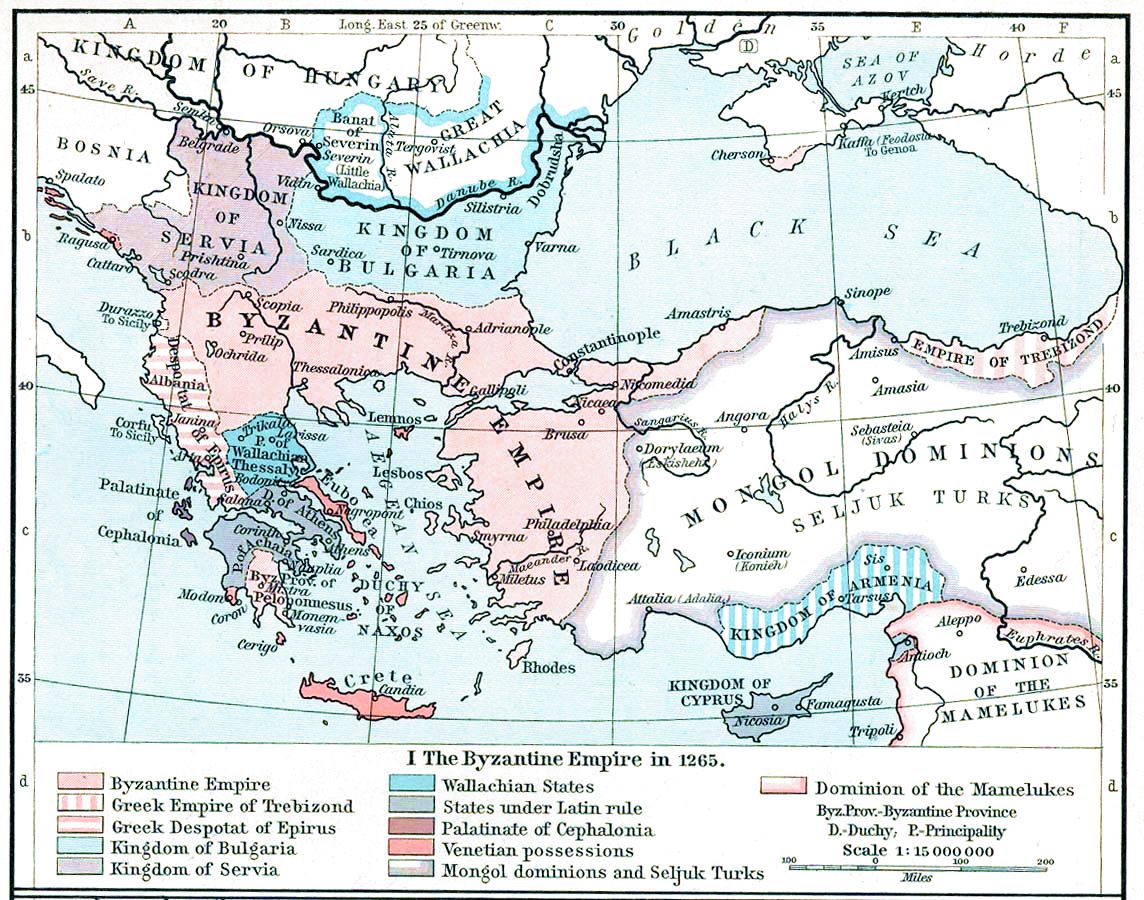|
John Bekkos
John XI Bekkos (also Beccus; Greek: Ἰωάννης Βέκκος; 1225 – March 1297) was Patriarch of Constantinople from 2 June 1275 to 26 December 1282, and the chief Greek advocate, in Byzantine times, of the reunion of the Eastern Orthodox and Roman Catholic Churches. Life John Beccus was born in Nicaea among the exiles from Constantinople during the period of Latin occupation of that city, and died in prison in the fortress of St. Gregory near the entrance to the Gulf of Nicomedia. Our knowledge of Beccus's life is derived from his own writings, from writings of Byzantine historians such as George Pachymeres and Nicephorus Gregoras, from writings against him by Gregory II of Constantinople and others, and from defences of him by supporters of ecclesiastical union like Constantine Meliteniotes and George Metochites. John XI's history is closely bound up with the fortunes of the Union of the Churches declared at the Second Council of Lyon (1272–1274), a union promoted ... [...More Info...] [...Related Items...] OR: [Wikipedia] [Google] [Baidu] |
Jacques Goar
Jacques Goar (1601 – 23 September 1653) was a French Dominican Order, Dominican and Hellenism (Academia), Hellenist. Life He was born at Paris, entered the convent of the Annunciation in the Rue St. Honoré in 1619, and made his profession there 24 May 1620. Although lector of philosophy and theology, he applied himself to the study of Greek. He was sent to the Orient by his superiors, that he might eventually render service to the Roman Church, through his knowledge of the ecclesiastical documents and the positive theology of the Greeks. He resided at Chios as missionary Apostolic and prior of the Convent of St. Sebastian (1613–39). He travelled to observe the various rites, to form the acquaintance of Orthodox scholars, and to study the points at issue between the Catholics and Orthodox teachings. About 1640 he returned to Rome bringing with him many manuscripts, some of which were valuable. Henceforth he was in communication with Greek scholars, notably Leo Allatius, ... [...More Info...] [...Related Items...] OR: [Wikipedia] [Google] [Baidu] |
Nicephorus Gregoras
Nicephorus Gregoras (; Greek: , ''Nikēphoros Grēgoras''; c. 1295 – 1360) was a Byzantine Greek astronomer, historian, and theologian. His 37-volume ''Roman History'', a work of erudition, constitutes a primary documentary source for the 14th century. Life Gregoras was born at Heraclea Pontica, where he was raised and educated by his uncle, John, who was the Bishop of Heraclea. At an early age he settled at Constantinople, where his uncle introduced him to Andronicus II Palaeologus, by whom he was appointed '' chartophylax'' (keeper of the archives). In 1326 Gregoras proposed (in a treatise which remains in existence) certain reforms in the calendar, which the emperor refused to carry out for fear of disturbances; over two hundred years later they were introduced by Gregory XIII on almost the same lines. Downfall of Andronicus II When Andronicus was dethroned (1328) by his grandson Andronicus III Palaeologus, Gregoras shared his downfall and retired into private ... [...More Info...] [...Related Items...] OR: [Wikipedia] [Google] [Baidu] |
Pope John XXI
Pope John XXI (, , ; – 20 May 1277), born Pedro Julião (), was head of the Catholic Church and ruler of the Papal States from 8 September 1276 to his death in May 1277. He is the only ethnically Portuguese pope in history.Richard P. McBrien, ''Lives of the Popes'', (Harper Collins, 1997), 222. He is sometimes identified with the logician and herbalist Peter of Spain (; ), which would make him the only pope to have been a physician. Early life Pedro Julião was born in Lisbon between 1210 and 1220 to Julião Pais, chancellor of Afonso Henriques and Sancho I, and his wife Mor Mendes. He started his studies at the episcopal school of Lisbon Cathedral and later joined the University of Paris, although some historians claim that he was educated at Montpellier. Wherever he studied, he concentrated on medicine, theology, logic, physics, metaphysics, and Aristotle's dialectic. He is traditionally and usually identified with the medical author Peter of Spain, an important ... [...More Info...] [...Related Items...] OR: [Wikipedia] [Google] [Baidu] |
Vitalien Laurent
Vitalien Laurent (born Louis Philippe Olivier Laurent; Séné, 26 May 1896 – Paris, 21 November 1973) was a French priest and Byzantinist. He was editor of the journal '' Échos d'Orient'' (predecessor of the '' Revue des études byzantines''). He published nearly 700 works in the fields of Greek hagiography, Byzantine history, Byzantine sigillography and Byzantine ecclesiastical history. Most notably, he edited Sylvester Syropoulos' account of the Council of Florence, the registers of the Constantinopolitan Patriarchy (years 1204–1309) and a synodal tome from the age of Patriarch Matthew the 1st. He was a researcher of the French CNRS from 1958; before that, he had spent several years in Poland, Romania and Germany, affiliated to the universities of Poznan, Warsaw, Bucharest – where he co-founded the French Institute of Byzantine Studies –, and Munich. In 1952, he had become conservator of the Vatican medal collection. He was member of several scientific academies an ... [...More Info...] [...Related Items...] OR: [Wikipedia] [Google] [Baidu] |
Gerhard Richter
Gerhard Richter (; born 9 February 1932) is a German visual artist. Richter has produced Abstract art, abstract as well as photorealistic paintings, photographs and Glass art, glass pieces. He is widely regarded as one of the most important contemporary German artists and several of his works have set record prices at auction, with him being the most expensive living painter at one time. Richter has been called the "greatest living painter", "the world's most important artist" and the "Picasso of the 21st century". Personal life Childhood and education Richter was born in Hospital Dresden-Neustadt in Dresden, Saxony, and grew up in Reichenau (now Bogatynia, Poland), and in Waltersdorf (Zittauer Gebirge), in the Upper Lusatian countryside, where his father worked as a village teacher. Gerhard's mother, Hildegard Schönfelder, gave birth to him at the age of 25. Hildegard's father, Ernst Alfred Schönfelder, at one time was considered a gifted pianist. Ernst moved the family to D ... [...More Info...] [...Related Items...] OR: [Wikipedia] [Google] [Baidu] |
Epiphanius Of Salamis
Epiphanius of Salamis (; – 403) was the bishop of Salamis, Cyprus, at the end of the Christianity in the 4th century, 4th century. He is considered a saint and a Church Father by the Eastern Orthodox Church, Eastern Orthodox, Catholic Churches, and some Presbyterians. He gained a reputation as a strong defender of orthodoxy. He is best known for composing the ''Panarion'', a compendium of eighty Heresy, heresies, which included also pagan religions and philosophical systems. There has been much controversy over how many of the quotations attributed to him by the Byzantine Iconoclasts were actually by him. Regardless of this, he was clearly strongly Aniconism in Christianity, against some contemporary uses of images in the church. Life Epiphanius was either born into a Romaniote Jews, Romaniote Christian family or became a Christians , Christian in his youth. Either way, he was a Romaniote Jew who was born in the small settlement of Besanduk, near Bayt Jibrin, Eleutheropolis ... [...More Info...] [...Related Items...] OR: [Wikipedia] [Google] [Baidu] |
Cyril Of Alexandria
Cyril of Alexandria (; or ⲡⲓ̀ⲁⲅⲓⲟⲥ Ⲕⲓⲣⲓⲗⲗⲟⲥ; 376–444) was the Patriarch of Alexandria from 412 to 444. He was enthroned when the city was at the height of its influence and power within the Roman Empire. Cyril wrote extensively and was a major player in the Christological controversies of the late-4th and 5th centuries. He was a central figure in the Council of Ephesus in 431, which led to the deposition of Nestorius as Patriarch of Constantinople. Cyril is counted among the Church Fathers and also as a Doctor of the Church, and his reputation within the Christian world has resulted in his titles ''Pillar of Faith'' and ''Seal of all the Fathers''. The Nestorian bishops at their synod at the Council of Ephesus declared him a heretic, labelling him as a "monster, born and educated for the destruction of the church". Cyril is well known for his dispute with Nestorius and his supporter, Patriarch John of Antioch, whom Cyril exclude ... [...More Info...] [...Related Items...] OR: [Wikipedia] [Google] [Baidu] |
Basil Of Caesarea
Basil of Caesarea, also called Saint Basil the Great (330 – 1 or 2 January 379) was an early Roman Christian prelate who served as Bishop of Caesarea in Cappadocia from 370 until his death in 379. He was an influential theologian who supported the Nicene Creed and opposed the heresies of the early Christian church such as Arianism and Apollinarianism. In addition to his work as a theologian, Basil was known for his care of the poor and underprivileged. Basil established guidelines for monastic life which focus on community life, liturgical prayer, and manual labor. Together with Pachomius, he is remembered as a father of communal monasticism in Eastern Christianity. He is considered a saint by the traditions of both Eastern and Western Christianity. Basil, together with his brother Gregory of Nyssa and his friend Gregory of Nazianzus, are collectively referred to as the Cappadocian Fathers. The Eastern Orthodox Church and Eastern Catholic Churches have given him, tog ... [...More Info...] [...Related Items...] OR: [Wikipedia] [Google] [Baidu] |
Tower Of Anemas
The Prison of Anemas () is a large Byzantine building attached to the walls of the city of Constantinople (modern-day Istanbul, Turkey). It is traditionally identified with the prisons named after Michael Anemas, a Byzantine general who rose in unsuccessful revolt against Emperor Alexios I Komnenos (r. 1081–1118) and was the first person to be imprisoned there. The prison features prominently in the last centuries of the Byzantine Empire, when four Byzantine emperors were imprisoned there. Description The building is located in the suburb of Blachernae, between the mid-12th century stretch of walls constructed by the Emperor Manuel I Komnenos (r. 1143–1180) and the earlier walls of Byzantine emperors Heraclius (r. 610–641) and Leo V the Armenian (r. 813–820). A small stretch of wall connects the structure to the east with the wall of Manuel Komnenos. The structure's outer wall itself is extraordinarily high, rising as high as 23 m above the ground in front of it, and is ... [...More Info...] [...Related Items...] OR: [Wikipedia] [Google] [Baidu] |
Michael VIII Palaiologos
Michael VIII Palaiologos or Palaeologus (; 1224 – 11 December 1282) reigned as Byzantine emperor from 1261 until his death in 1282, and previously as the co-emperor of the Empire of Nicaea from 1259 to 1261. Michael VIII was the founder of the Palaiologos, Palaiologan dynasty that would rule the Byzantine Empire until the Fall of Constantinople in 1453. He Reconquest of Constantinople, recovered Constantinople from the Latin Empire in 1261 and transformed the Empire of Nicaea into a Byzantine Empire under the Palaiologos dynasty, restored Byzantine Empire. His reign saw considerable recovery of Byzantine power, including the enlargement of the Byzantine army and Byzantine navy, navy. It also included the reconstruction of the city of Constantinople, and the increase of its population. His re-establishment of the University of Constantinople contributed to the Palaeologan Renaissance, a cultural flowering between the 13th and 15th centuries. It was also at this time that the fo ... [...More Info...] [...Related Items...] OR: [Wikipedia] [Google] [Baidu] |
Pope Gregory X
Pope Gregory X (; – 10 January 1276), born Teobaldo Visconti, was head of the Catholic Church and ruler of the Papal States from 1 September 1271 to his death and was a member of the Third Order of St. Francis. He was elected at the conclusion of Papal election, 1268–1271, a papal election that ran from 1268 to 1271, the longest Papal conclave, papal election in the history of the Catholic Church. He convened the Second Council of Lyon and also made new regulations in regards to the papal conclave. Gregory was beatified by Pope Clement XI in 1713 after the confirmation of his Cult (religious practice)#Outwards religious practice, cultus. Gregory's regulations on the conduct of the conclave, though briefly annulled by Adrian V and John XXI, remained standard practice until the 20th century. Gregory's rules were dispensed in certain extraordinary circumstances, offering greater latitude in regulating an upcoming conclave, such as by Pope Pius VI in 1798, in conside ... [...More Info...] [...Related Items...] OR: [Wikipedia] [Google] [Baidu] |
Second Council Of Lyon
The Second Council of Lyon was the fourteenth ecumenical council of the Roman Catholic Church, convoked on 31 March 1272 and convened in Lyon, Kingdom of Arles (in modern France), in 1274. Pope Gregory X presided over the council, called to act on a pledge by Byzantine emperor Michael VIII to reunite the Eastern church with the West.Wetterau, Bruce. World history. New York: Henry Holt and company. 1994 The council was attended by about 300 bishops, 60 abbots and more than a thousand prelates or their procurators, among whom were the representatives of the universities. Due to the great number of attendees, those who had come to Lyon without being specifically summoned were given "leave to depart with the blessing of God" and of the Pope. Among others who attended the council were James I of Aragon, the ambassador of the Emperor Michael VIII Palaiologos with members of the Greek clergy and the ambassadors of Abaqa Khan of the Ilkhanate. Thomas Aquinas had been summoned to ... [...More Info...] [...Related Items...] OR: [Wikipedia] [Google] [Baidu] |




